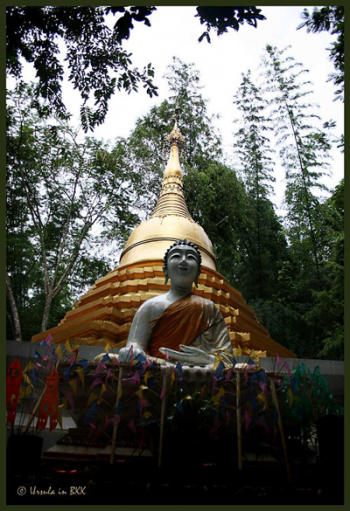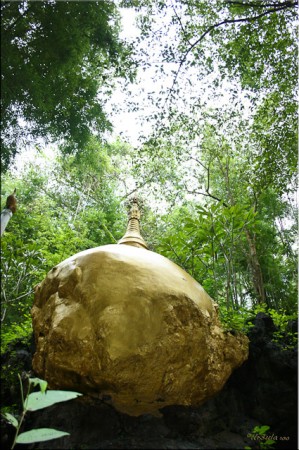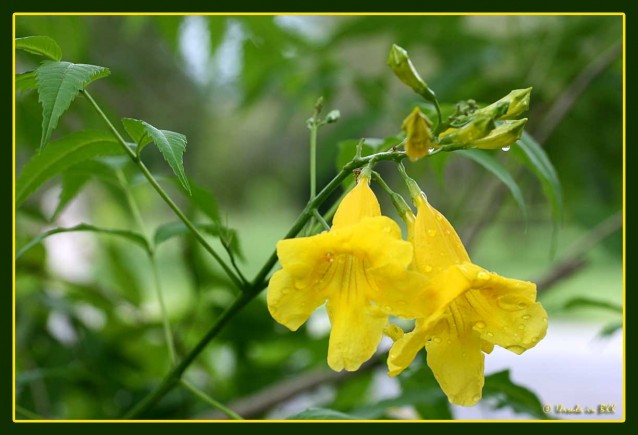
"Raise Your Eyes to the Skies" Traditional Mon Temple
As I said last week, Kanchanaburi offers much, much more than just the infamous Death Railway. I was going to share some waterfall shots from our most recent trip and from last year, but I’ll save the nature for some other time in favour of some glimpses into the past, distant past, and living-the-past-in-the-present.
It amazes me how many ethnic groups still live in semi-isolated communities scattered all over Thailand and it’s regional neighbours. Some are displaced and in effect stateless, and spend their whole lives in refugee camps. Some, like the Long-Neck Karen, are protected by the Thai government because of their potential as a tourist attraction. Others, like the Mon from Myanmar who have settled in the Sai Yok area of Kanchanaburi, are able to live their traditional lifestyle, albeit somewhat dependent on tourist dollars from the visitors who buy produce and crafts or stay to watch traditional dances.

A Golden Stone, Like the Famous one in Myanmar, Sits atop a Sacred Relic
Kanchanaburi is, and probably always has been, border territory. Not far down the River Kwai Noi from the Mon village are the ruins of a laterite village-temple complex believed to have been a 12th century trading and defence outpost of the Khmer Singh empire. Called Muang Singh (Lion City), the city was important enough to be mentioned in inscriptions dating to the reign of the Angkor King Jayavarman VII. Reclamation work started on the site in 1974, and it’s an elegant, quietly crumbling monument set on 640 rai (about 100 hectares) of well-maintained land. The gentle rains on the day we visited probably only added to the reverent hush.
Nearby, a Neolithic (3,000 BC) burial site has been uncovered and is open to view. The story goes that it was one of the builders of the Death Railway, a Dutch POW, who first found evidence of Neolithic settlement in this area. The Ban Kao Museum houses a number of artefacts unearthed from those times.

Yellow Oleander in the Prasat Muang Singh Carpark

Fresh Frangipani and Crumbling Angkor Empire Laterite

Twelfth Century Prasart Muang Singh

Old Laterite and Young Greens

Khmer Botthisattva

Fallen Hot-Pink Frangipani

Frangipani ~ Okay, so I Like Flowers!

Sacred Khmer Head in the Muang Singh Museum

5000 Year-Old Neolithic Remains
I guess the moral of the story is: You are dead a long time! In the meantime, travel well. 



.png)











.jpg)


as always… beautiful… back in BK?
Thanks, Signe! Yes, back in BKK… until tomorrow! Weekend on the beach. 😀